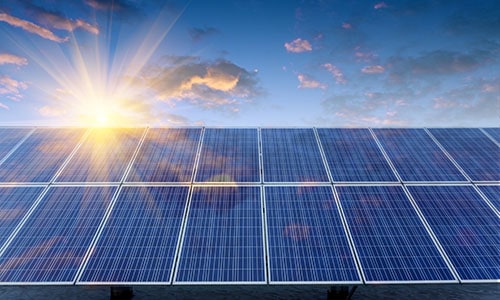702-660-7000
702-660-7000

On a recent trip to Costco a Solar Energy Company representative approached us and offered a free evaluation to see if going Solar would work for us. Living in the heart of the Sunbelt in Henderson, Nevada, it made sense to check it out.
Accordingly, the following Saturday the company rep came out to the house. Over the course of an hour or so he discovered that by putting a number of Solar Panels on our roof we could lower our electric bill by about a third. The rep remarked that anybody doing the math should be able to realize the savings going Solar provided. So we did the math.
Tallying up the electricity bill savings, it would take approximately 18 years to pay for the panels if they could completely reduce your electricity costs to $0.00 annually.
But to be fair, the Federal Government subsidy being provided to those who install Solar Panels before 2016 could reduce that recovery period to slightly over 12 years if your bills were zeroed out with the solar panel installation.
At the same time you must realize that each year Solar Panels become less and less efficient over time. And so after 20 years, and maybe even before then, you may be required to replace some of them if you’re really going to continue generating electricity efficiently. But here is the catch. Solar panels operating at their maximum efficiency only reduce your annual “electricity bill about 1/3”[i] and not 100%.
Here in Nevada the average electricity bill per household is $1,620 a year[ii]. Therefore you could end up saving $534.60 a year but would end up paying more much than that back to the solar company who installed your panels. Growing savings like this is really problematic if you desire to create wealth, and here’s why.
Looking at the upfront cost of the Solar Panels, which on average is $19,440, it is easy to see that this cost eliminates any savings and actually increases the cost of your electricity usage over the first 12 years. Now contemplate what you might have earned on the $19,440 had you not spent it on Solar Panels. If you could have earned a simple 4% on that $19,440, then you would have $31,124,07 over the 12 years. $31,124.07 minus the cost of investment ($19,440) comes to $11,684.07. This is significantly a greater profit than the $6,415.20 ($534.6 per year) that you could have saved on your electricity bill over the same 12 year period with the installation of solar panels. The difference of $5,268.87 is money that you simply threw away. By focusing on this upfront cost component of money management you can see that the theory of the rep from the Solar Company falls flat when you do the math.
Cost of Solar Panels: $19,440.00
Time Value of Money: 4%
Total Cost of Solar Panels (12 year period): $31,124.07
Without considering the time value of money you may end up similar to the 3 amigos that checked into a motel. The manager collected $30 from them, $10 from each guest, and off they went to their room. Later the manager called the busboy over to take a refund to the 3 amigos because he had over charged them. The room was $25 a night not $30 so he gave 5 one-dollar bills to the busboy and told him to run it down to the 3 amigos. The 3 amigos realized that it’s difficult to divide 5 one-dollar bills equally between three people so they took $1 apiece and gave the other $2 to the busboy as a tip.
Now each guest paid $9 for the room ($10 – $1 = $9)…a total of $27, add the $2 tip and that brings us to $29. So where did the other $1 go? Remember the 3 amigos had given the manager $10 apiece, which equals $30.
Did that $1 just vanish into thin air? No, certainly not. What happened is the way the facts were told made you focus on the wrong thing. Give our office a call if you need help straightening this one out. 702-660-7000
Now you might be thinking that the extra cost of putting in Solar Panels is worth it because you are “saving the environment”. And that’s fine, but realize that those panels are junk after 20 to 25 years and so they create an environmental hazard in and of themselves. Secondly, you must consider what the environmental impact is on the resources required to build and manufacture the panels themselves. Only then can you know if your extra cost is really impacting the environment the way you believe it might be.
The point is this: The time value of money is the built in factor that determines if the cost of a product is worth the savings that it provides (be it environmental or economical.) That is why the Perpetual Wealth Code™ includes the time value of money within its parameters. You see, if you don’t take into consideration the time value of money, you’ll be penalized and find yourself always playing catch-up to those who do consider the time value of money. That will leave you with less if the impact you your really want to have in your life be it environmentally or economically.
[i] Remember now, that above scenario is based on our houses’ roof line and pitch which just happens to be ideal AND the fact that we are located in the heart of the Mojave Desert which has nearly unlimited sunshine 90% of time. Alter any of those facts and the efficiency of Solar Panels will diminish accordingly.
[ii] LasVegasSun.com, Utilities, November 23, 2015